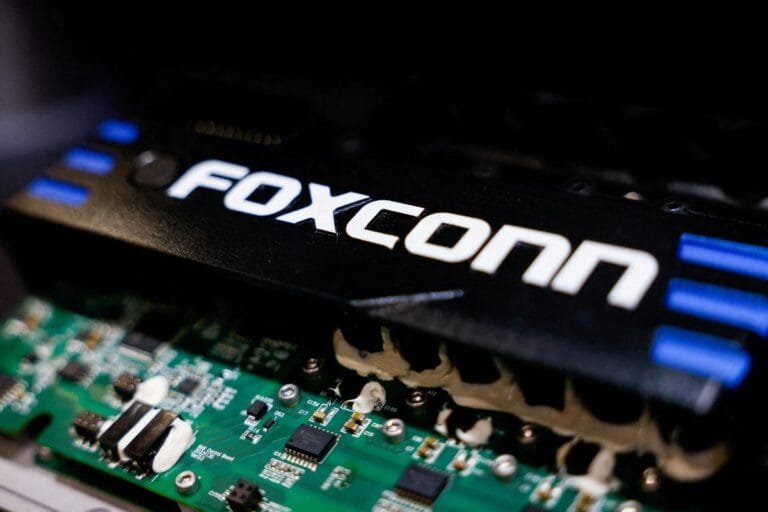
Intel headquarters in California — the center of its Q3 2025 turnaround story.
Process delays, increased competition, high expenses, and a declining profitability period. Intel has recently overcome these challenges, increased investment, begun cost-cutting, and reported better results in Intel Q3 earnings 2025. This is why its shares have suddenly surged. For example, according to one report > “Intel reported better-than-expected profits for the third quarter of 2025, driven by aggressive cost-cutting measures … The company’s shares rose 7% in after-hours trading.” “The stock has surged roughly 85% year-to-date …” So, let’s break this story down into several parts.
Intel’s Previous Position — Where the Problem Lies
“This marks a return to profitability… after losses in prior quarters.” Lack of Cohesion in Strategic Vision The previous CEO and management adopted a “do-it-yourself” strategy, which proved cumbersome in today’s fast-paced chip industry. This led to questions in the market about whether Intel would be able to regain its global chip leadership. Intel thus faced a difficult turning point—“large expenses, slow progress, and increasing competition”—in which it had to reassert itself.
New Turning Point — Investment and Cost Control
Intel initiated a transformation in the past few months, which is the primary reason behind the stock’s rally. Major Investments and Partnerships The US government has taken a nearly 10% stake in Intel, which is significant from the perspective of “national security (for) chip manufacturing.” In addition, companies like SoftBank and NVIDIA have made partner investments in Intel. SoftBank invested approximately $2 billion. Such investments send a message like: “Big players are trusting Intel”—and this has a significant psychological impact on the market. Cost Reduction and Structural Reforms Under the leadership of new CEO Lip-Bu Tan, Intel has worked to reduce its expenses and operations: reducing personnel, selling non-core businesses, and restraining capital expenditures.
For example: “Tan has slashed costs—cutting roughly 20% of Intel’s workforce…” Also, Intel has adopted a policy of focusing on its “core products” (such as CPUs, data-center chips)—and eliminating non-core or less profitable parts. Capitalizing on Market Demand Intel has stated that “demand is now outstripping supply,” particularly with the rise of data-center and AI workloads. This means that while strategic investments and improvements are driving growth, market trends (AI, data-centers) are also benefiting Intel.
Latest Financial Results and Stock Reaction on Intel Q3 earnings
Revenue was $4.1 billion, a positive sign after last year’s significant loss. Non-GAAP profit per share (EPS) was approximately $0.23, well above estimates. Shares Surge Following these results, Intel shares jumped approximately 7-9% in pre-market and after-hours trading. Year-to-date (YTD), Intel shares have surged approximately 85-90%. Investor sentiment shifts Investors have interpreted this shift as a sign that Intel is emerging from stagnation. For example: “Intel has turned a corner and is steadying the ship.” However, analysts have also cautioned that “the fight is still on”—meaning that enthusiasm is fine, but it’s not time to lose complete confidence.
Is everything alright now? — Challenges Remain
Yes, Intel has made significant improvements—but some significant risks and challenges remain. Margin Pressure in the Foundry Business Intel’s foundry services (producing chips for others) are not yet fully profitable. For example:
“Yields for its advanced 18A manufacturing process will remain below industry standards and won’t reach ‘acceptable levels’ until 2027.” This means that improving production capacity, costs, and efficiency is crucial in the coming years.
Also, competitors like Nvidia and AMD are rapidly advancing—Intel simply cannot afford to lag behind.
Guidance and Building Confidence Intel has forecast revenue of $12.8-$13.8 billion for Q4 2025; non-GAAP EPS of approximately $0.08. This is a relatively conservative guidance—investors will need to see further results to maintain confidence. The risk of becoming mere “hype” is that stock rallies are often based on “expectations.” If expectations are shattered (e.g., process delays, cost overruns, or competitive advantage), they could lead to declines. Market analysts have already said: “Perhaps it’s better to call it a draw for now”—a win isn’t assured yet.
What to watch for Intel Q3 earnings
If you want to keep an eye on Intel’s next move, consider the following: Advancements in foundry processes (18A, etc.) are essential for new processes to increase yield and reduce costs. Advances in AI and data-center products are essential for Intel to remain competitive in these areas. Margin improvement – Gross margins should increase relative to total sales. Capex and free cash flow – Expenses should decrease and cash flow should improve. Management guidance Further investor updates – next quarter’s estimates should be reliable. Market competitive landscape – moves by NVIDIA, AMD, TSMC, etc. will also be important.
Conclusion: Intel Q3 earnings
Intel’s turnaround story is inspiring – but it’s still a bit early to say “Intel is fully back.” The positive signs are clear – a better Q3, significant investments, and a reformed strategy. But risks are also present. Sustaining gains may take time. If Intel maintains this improvement and gains a foothold in future chip technology, shares have the potential to rise further. Investors should proceed with caution, keeping an eye on “expectations” as well as “reality.”






